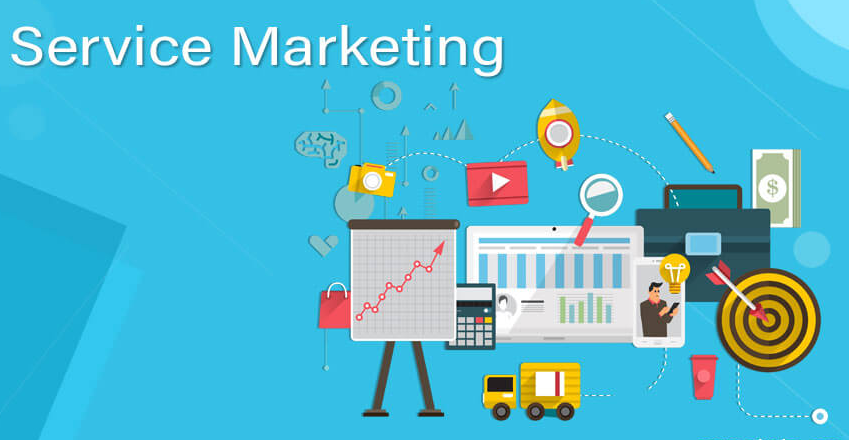Digital marketing is the backbone of any company today. In fact, it’s one of the most powerful and exciting tools a modern marketer can use to support business growth and create a strong brand presence. To take full advantage of all the benefits of digital marketing, you need a structure to focus and leverage the 6 C’s of digital marketing.
On the one hand, the 6 Cs can be used to review a website as well as a brand’s overall online presence to ensure that marketing communications are consistent and well-managed. They can also be used to track and study competitors’ activities.
Most importantly, remember to be customer-centric and make sure that all other elements are effectively contributing to the needs of your target audience.
In this blog post, we’ll break down the basics of each of the 6Cs to help you develop a digital marketing strategy that your competitors envy.
Thanks to ongoing advances in technology, the shopping habits of today’s consumers are very different than they were in the past. According to LyfeMarketing, 82% of shoppers research items online before making a purchase decision, and 79% make some or all purchases online. That’s not all.

Online spaces have also changed the way people search, process and share information. We’ve seen and are seeing growth in SEO, content marketing, social media and email marketing, as well as increasing demand for lead generation, mobile optimization, digital advertising and more.
The customer is the person in charge of your business
No matter what your marketing or business model is, you need to focus on the customer. Digital marketing offers the ability to tailor every campaign, communication and service to do everything possible to meet your audience’s needs. However, to maximize performance, you need to know your customers well and have a long-term plan.

The process begins with creating detailed marketing personas and then accurately planning the customer journey. This is an important step to take early in your business planning so that your marketing message reaches the right audience and strengthens your brand.
In addition, you need to monitor customer behavior. Consumers today place a high value on authentic, transparent and personalized communications and brand interactions at every stage of the sales cycle. In fact, according to Salesforce, 66% of customers ask companies to understand their unique needs and expectations.
New behaviors emerge every day, and as a digital marketer you need to be able to predict them and strive to better understand your customers. To succeed, you need to collect relevant customer data and use it to tailor content and improve your overall brand message.
Content is the boss of SEO success
Creating high-quality, unique and professional content is not the only prerequisite for a successful digital marketing strategy. Other important factors include being creative with your content format, updating outdated information, and tracking and complying with the latest search engine algorithm updates. In general, this means that you need to develop the skills to create great search engine optimised (SEO) content.

SEO content is any content created to help your target audience find your brand through faster and easier searches. Essentially, it’s a way of optimising your content and using the right keywords to help it rank higher on search engine results pages (SERPs).
There are many types of SEO content to consider. From blog posts, product and service pages, manuals and e-books to infographics, videos, slideshows and more. But before you can get creative, you need to know how to develop a strong SEO content strategy that you can stick to in the long run.
Here are some content creation workflow tips to help you:
Research keywords.
Choose a topic that piques the curiosity of your audience.
Research primary sources and add your own unique input.
Organise your thoughts and sketch them out.
Include relevant internal and external links.
Optimise your meta descriptions and alt tags.
Add secondary visuals.
Context is key to message effectiveness

If you want to communicate your brand message effectively, you need to understand the wider context of your target audience. Essentially, this means looking at customer intent, relating it to what’s currently happening in the world, and then creating and promoting content that is truly relevant to your audience’s needs.
According to Rebecca Leib, context in digital marketing refers to an untapped opportunity to understand your customers very precisely, anticipating their wants, desires, expectations and preferences. Once you have this, you must use it to improve your marketing across channels, devices and locations.
To achieve this, you need to strike a successful balance between keyword-rich content and intent-driven content. In this way, you make it easier for your audience to find your brand online, and give them the exact information they are looking for. If done right, this allows you to deliver extremely personalised content that is relevant to your recipients. This way, you can increase your online presence, authority and engagement.
Community – the foundation of success through word of mouth

Today’s customers have more buying power than ever before, so building strong relationships with them is fundamental to the success of any business. One of the most effective ways to develop customer relationships, build trust and brand loyalty, and attract potential customers is to harness the power of your community.
Community marketing is a great strategy for engaging your audience in a transparent, unobtrusive and conversational manner. It will help you build long-lasting and healthy relationships with current and potential customers by connecting them with topics that are relevant and relevant to your brand.
Using community as part of your digital marketing strategy will allow you to bridge the gap between where you want your business to go and the people who will help you do so, namely your customers. According to Disciple, people are more invested in a product or service if they have a strong sense of support, connection and belonging.
Here are some tips to help you build a strong community around your brand:
Create connections within your internal team.
Create a value-driven online presence.
Contribute positively to social endeavours.
Create expert and educational content.
Create a dedicated space where your community members can connect.
Be patient and consistent.
Convenience is the way to customer loyalty
Convenience is an important characteristic of a brand’s customer experience and a basic principle of customer service for any business.

Take the development of e-commerce as an example. Thanks to the Internet and advances in technology, people can now shop not only from their computers from the comfort of their homes, but also from their phones and tablets as they drive to work, sit in a restaurant or simply kill time before a meeting. .
According to TopRank, the convenience of digital marketing is about delivering the right message to the right person on the right platform at the right time. This includes improving the customer journey, making it easier for potential customers to find the information they need to make a buying decision, creating a better overall experience.
Convenience is not only an important competitive advantage, but also a creative lens that digital marketers can use to improve their marketing campaigns. If implemented correctly, it can help you reduce friction, improve customer service, eliminate stress, increase access and streamline your business’ value proposition.
To get the most out of it, you need to make sure that:
Get access to your content quickly and easily.
Easily recall previous messages and interactions with your brand.
Simply recognise their value as customers.
Conversions are the main indicator of success in digital marketing
Once you have developed a solid digital marketing strategy with all your precious resources, you need to measure the success of all your efforts. The best KPI to use here is conversion rate.
Depending on your campaign, a conversion can be any desired user action that helps your business achieve its goals. This includes not only successful sales, but anyone who fills out forms, downloads white papers, case studies and e-books, sends you emails, subscribes to your newsletter, etc.
By using digital marketing strategies to maximise the conversion rate of your marketing campaigns, you can increase your revenue without spending too many resources. What’s more, they can help you predict success (or failure), improve website performance and/or better understand the preferences of your target audience.
If done correctly, conversion tracking will tell you which visitors are willing to make a purchase and which ones are just enjoying browsing, which pages of content your target users are most interested in, and whether any improvements you have made to your online strategy are yielding the desired results.
Customers play a key role in your company’s success, and keeping them at the centre of your marketing efforts is essential to making the 6Cs model marketing work. This means finding the best way to cut through the noise, engage them and create an enjoyable experience that keeps them coming back.






